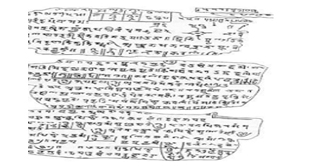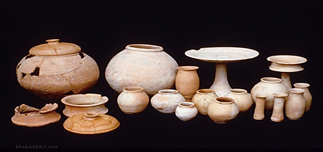“We owe a lot to the ancient Indians, teaching us how to count. Without which most modern scientific discoveries would have been impossible.” – Albert Einstein.
Indian tradition is one of the primeval traditions in the globe which explores science and technology from the very beginning of civilization. The habit of boring the natural things and trying to go into the root of the fact made them unique. The Vedic age lasted from around 1500 BCE through to 500 BCE. The age is known as ‘Heroic Age’ of Indian civilization as this period helped to reform the structure of basic foundation of India and rescued the tradition from suffering for the existence. Vedic age is called the age of researchers and scientists as well. Vedic texts are so much valuable that it can be applied to the modern technology and texts contain some moral stories; Veda means Knowledge and the texts must contain some relevant knowledge otherwise it would not have survived till now. There are many instances which prove that Mechanical Engineering was pursued during the Vedic period.

Numerical notations in Vedic text.

Chakravala method of solving indeterminate quadratic equations
In this era, many books were published in Sanskrit based on the science and technology like Yantra Sarvaswa, Samarangana Sutradhara, Silptantra Rahasya, Yukti Kalpataru etc. Here, key innovations are mentioned based on the application of Mechanical Engineering in that period.
Ceramic Technology:
First ever mechanical device that was invented in this era was wheel and potter was supposed to be the first engineer. The mechanism of the wheel is still used in lathes, in Veda, Kulla (Potter) was compared with the creator of the universe. We came to know about brunt pots and other forms of clay materials in Indus-Valley studies, generally the shapes were peer shaped, conical and cylindrical. Bricks were made by black and red clay, mica, sand and lime stones in this period. Even the pots were glazed and painted to make attractive by using Manganese for maroon shade, Copper oxide for blue shade and Iron oxide for bluish-green shade. The chemicals what they used for controlling the surface were 25.2% FeO, 46.55% SiO2, 15.53% Al2O3, 4.74% CaCO3, these have been confirmed by Dwarka Excavations which took place recently. According to Kasyapa Samhita, it can be said that wooden moulds are used to make the bricks. The dimensions of the bricks were 11.72″ x 5.25″x 7.5″; 11.55″ x 7.75″; 10.5″ x 5.5″ x 7.5″, the steadiness of dimensions shows the accuracy level of the masterminds.

Various finding in Keezhadi

Various finding in Dharampuri
Metallurgy & Metal Casting:
From Surmyam Suiramiva, we came to know that the metals like Fe, Cu, Ag, Au etc were know to the Vedic people. The technique of making alloys and preparation of mining were also known to them in the Atharvan period. Quintus Curtis appreciated the gold and other metal alloys which were given to Alexander by Pourava. Pliny and Herodotus talked about the superior quality of iron and steel products of India. Romans used to import Indian metal to make weapons, shield and other military equipments during Vedic period. Usage of irons has been confirmed by archaeological excavations in Delhi, Taxila, Odissa, Rajasthan and Madhya Pradesh where large numbers of bars, spikes, tongs, chisels, anvils etc were found. From early Vedic time, the developments of metal casting were traced. In Rigveda, some equipments used for castings are mentioned like Dhamatri (Cupola), Bhastri (Blower), Titau (Seives), Sh£rpa (Trays), Gharma Ayanmaya (Crucible) etc. In Rig-Vedic period copper, iron, gold and silver were used for metal casting purposes. Many idols of goddesses were found in South India those were made in Vedic period by metal casting process. The accuracy and precision of this process were controlled by the laws laid down by Viswa Karma, Maya, Viswaroopa etc.

Meal casted coins

Meal casted Idols
Material Science:
Many terms can be found in Panchabuta and Suddha like –
Gurutva (gravity)
Dravatva (fluidity)
Snigdhatva (viscosity)
Sthitisth¡pakatva (elasticity)
Samyoga – Viyoga (Conjunction and disjunction)
Pluakava(Springing capacity)
Vakrbhvanam (Refraction or bending)
Virpam (deformation)
Draghanam (tension)
Pranam (compression)
This indicates the knowledge about the material properties, they knew about the prevention technique of rusting and corrosion also. Forging was termed as Eyohata, the renowned blacksmith Tatwa was recognized as god of sacrifice. Agriculture and military equipments were made by forging as there was existence of anvil, hammer and tongs. Hot working and cold working techniques were there and it is confirmed by the metallographic testing done in Harappa. Plastic deformation, annealing and grain growth were observed in Indus metal pieces.

Aerodynamics:
Very few people know about Tritala, Jalayan, Karaa, Vayurathaa and Vidyutrathaa which are mentioned in Rigveda. This signifies about the knowledge of aerodynamics in that era which is way before the invention of the Wright brothers. CFD analysis is being on the designs which are in the Vimana Shastra and the abilities and structural rigidity are being investigated to see the depth of the knowledge in that period. After exploring the Vimana Shastra slokas, it has been analyzed that eco friendly manufacturing, defense system, propulsion and space travel theories were explained well in those slokas. ISRO and DRDO are working on making the prototypes of the designs of the aircrafts for testing which are there in Vimana Shastra by giving the importance in Reverse Engineering. It has been also observed that there was a clear indication of the metals by which Viyans(aircraft) were made, alloy of Soumaka, Soundalika and Mourtwika lohas was used to make the structure of an aircraft.. Few technical terms were there in Vimana Shastra which can be evidences regarding the pursuit of aerodynamics studies in Vedic age, like –
Dayana (coming down)
Uddayana (flying above)
Sundhna (hitting the target with high speed)
Kinda (raising suddenly)
Vyinda(coming down quickly)
Kirpostika (flying still)
Keelaka (Gear Mechanism and other handles of levers),
OuÀmaka Yantrika (Drying machine),
Vatanala ( air duct )
Jalavarana nala ( cooling water circulating circuit ),
Tailap¡tra ( oil tank )
V¡ta-p¡caka-tantre-nala ( air filter or air fuel mixer ),
Agnisthana (Engine)
Vidyut yantra ( Batteries)
Vata-codana-yantra(Propellers)
Disapracodakayantra ( steering wheel type direction changer )
Suryasaktya-Karsanadarpana and Souramani ( Solar mirror and solar cell )
Dhumanirgamanala ( Exhaust outlet )

Advanced Flying Machines are described in Vedic Age
Metrology:
|
|
|
|
Some measuring scales in Vedic period are mentioned here.
Samarbhatta, Parimani, Vyavaharike and Kautilya described the mechanism of calibration of weight and other metrological parameters to have accuracy in measuring.
The advancement of technologies in that era touched the summit and that helped the civilization to be recognized as the best across the globe.
“Desire links non-being to being.”- Quotes from Rigveda
Visited 4290 times, 4 Visits today


